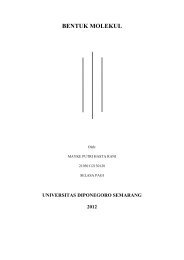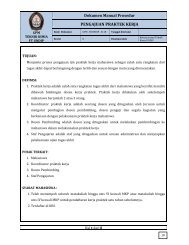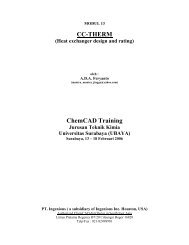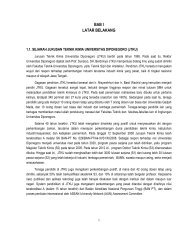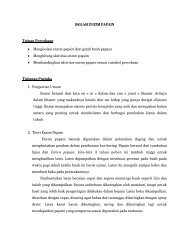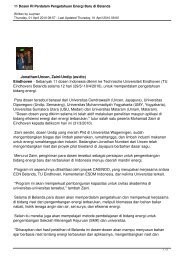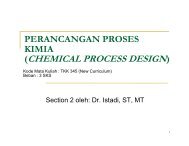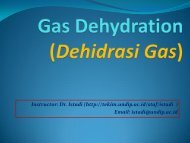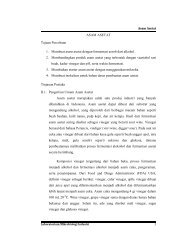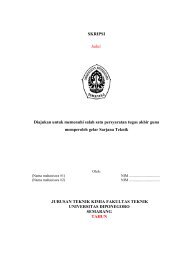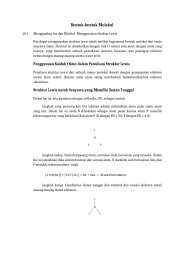Alkylation of Benzene by Propylene to Cumene 6
Alkylation of Benzene by Propylene to Cumene 6
Alkylation of Benzene by Propylene to Cumene 6
- No tags were found...
Create successful ePaper yourself
Turn your PDF publications into a flip-book with our unique Google optimized e-Paper software.
6.5 Energy Integration 187<strong>of</strong> propane with less than 100 ppm benzene: 16 theoretical stages with feed on 5and a temperature <strong>of</strong> 150 ° C, and a reflux <strong>of</strong> 4300 kg/h.The recycle column (C - 2) is characterized <strong>by</strong> a very large distillate/feed ratio.Therefore, the design should minimize the reboiler duty. In addition, the pressureshould be low enough <strong>to</strong> avoid excessive reboiler temperature. High recovery <strong>of</strong>benzene in <strong>to</strong>p is desirable (over 99.9%) but small amounts <strong>of</strong> cumene are <strong>to</strong>lerated.In a first attempt we consider a column <strong>of</strong> 25 stages operated at atmosphericpressure, with feed location in the middle and a reflux ratio <strong>of</strong> 0.26.The column (C - 3) for cumene distillation operates under vacuum <strong>to</strong> avoid anexcessive bot<strong>to</strong>m temperature. A number <strong>of</strong> 30 stages and a reflux ratio <strong>of</strong> 1.2 aresufficient <strong>to</strong> ensure good - purity cumene with less than 100 ppm benzene.In order <strong>to</strong> focus on the main issues <strong>of</strong> process integration, we disregard thedistillation column for heavies, as well as the transalkylation section. A preliminarysimulated flowsheet in Aspen Plus [9] is shown in Figure 6.8 , with values <strong>of</strong> temperatures,pressures and heat duties. The fresh feed <strong>of</strong> propylene is 110 kmol/h.Note that design specifications are used for the fine tuning <strong>of</strong> the simulation blocks.The fresh benzene is added in the recycle loop as makeup stream so as <strong>to</strong> keepthe recycle flow rate constant. This approach makes the convergence easier.6.5Energy IntegrationBased on the preliminary flowsheet a table <strong>of</strong> streams for heat integration are built(Table 6.10 ). On this basis a pinch - point analysis can be done <strong>by</strong> using a specializeds<strong>of</strong>tware, such as SuperTarget [10] . In this way, targets for energy <strong>by</strong> can bedetermined for ∆ T min <strong>of</strong> 10 ° C, as shown in Figure 6.8 . The minimum energyrequirements are Q h = 9143.4 kW and Q c = 11 063.9 kW. By taking advantage onlyfrom process/process heat exchange a saving in heat up <strong>to</strong> 43% in hot utility and40% in cold utility can be achieved. Since the reaction is highly exothermal, weexpect possible export <strong>of</strong> energy <strong>to</strong>o.Table 6.10 Hot and cold stream table.Cold streamsHot streamsName T s ( ° C) T t ( ° C) Duty (kW) Name T s ( ° C) T t ( ° C) Duty (kW)Reac<strong>to</strong>r_in 72 170 3 657.5 Reac<strong>to</strong>r_out 236.6 150.0 − 3 781.4Feed_C - 2 197.9 90.0 − 4 116.9Reb_C - 1 198.9 197.9 2 318.1 Cond_C - 1 36.3 35.3 − 399.1Reb_C - 2 162.1 163.1 7 870.8 Cond_C - 2 83.4 82.4 − 7 572.9Reb_C - 3 161.1 162.1 1 979.6 Cond_C - 3 99.3 98.3 − 2 413.6Total 15 826.6 − 18 283.9



